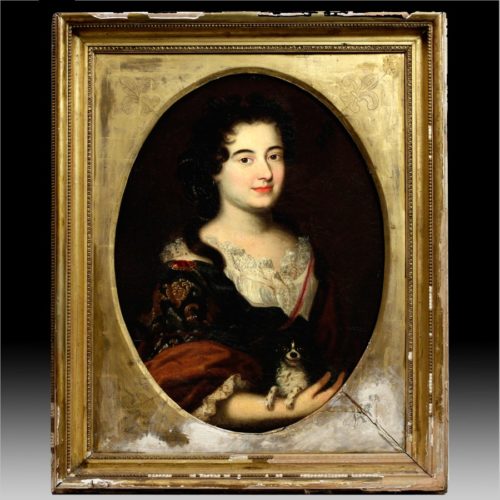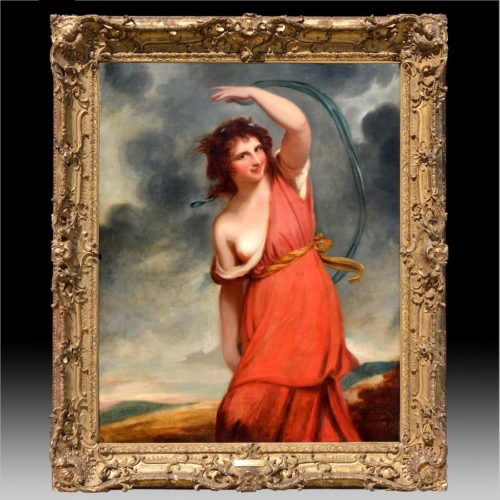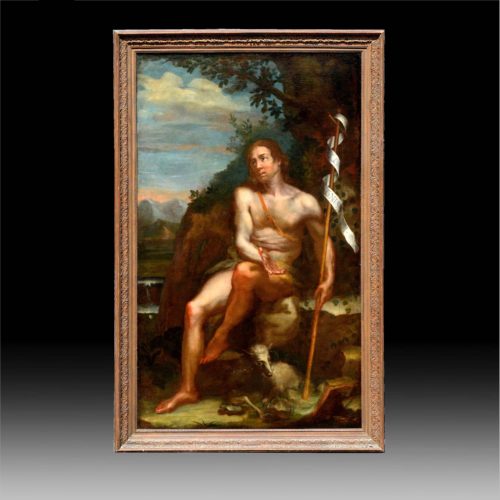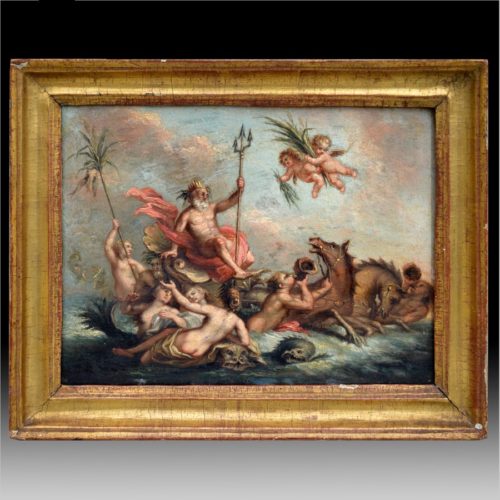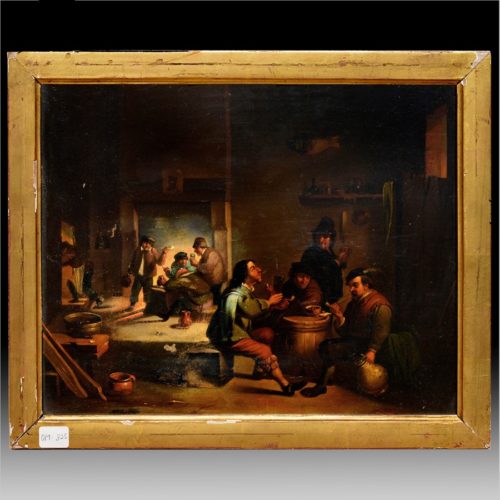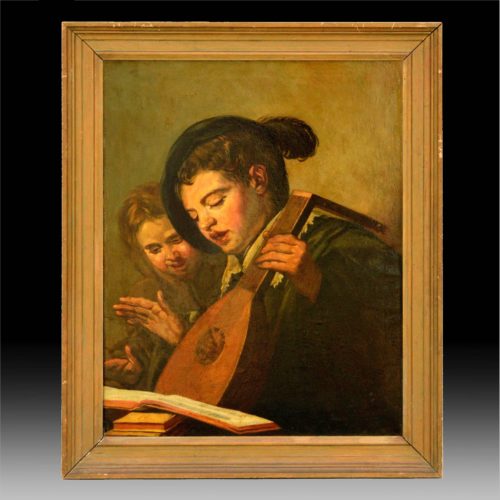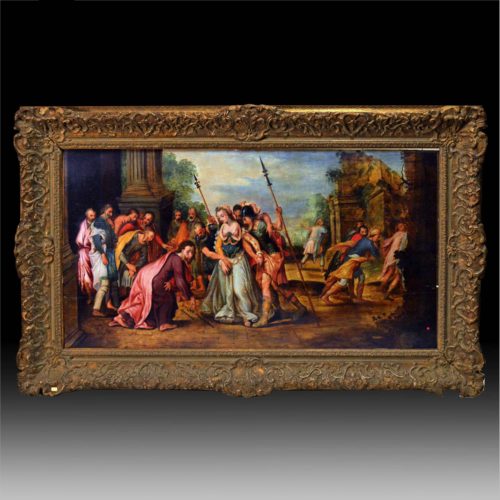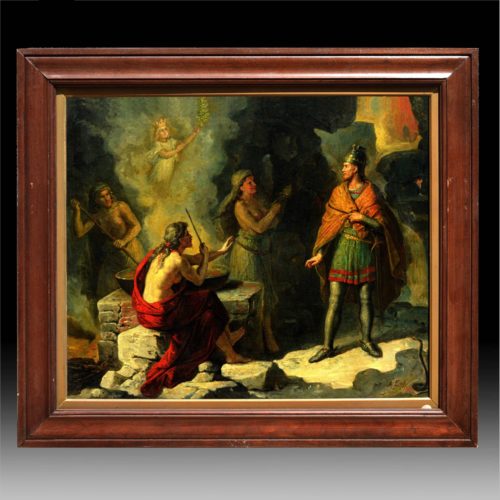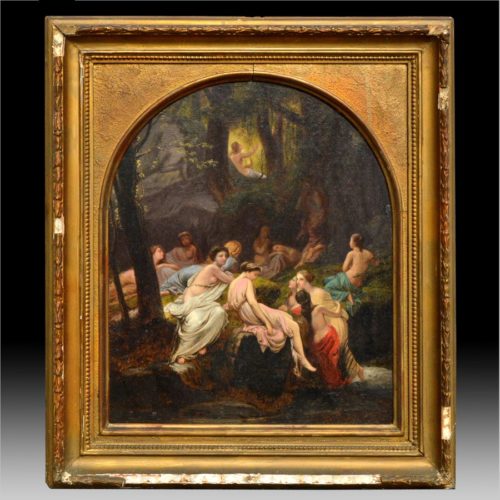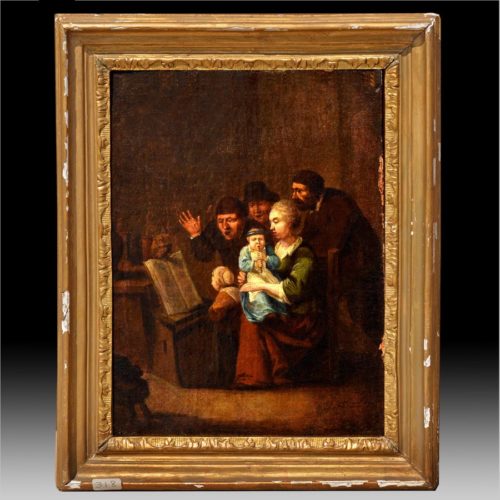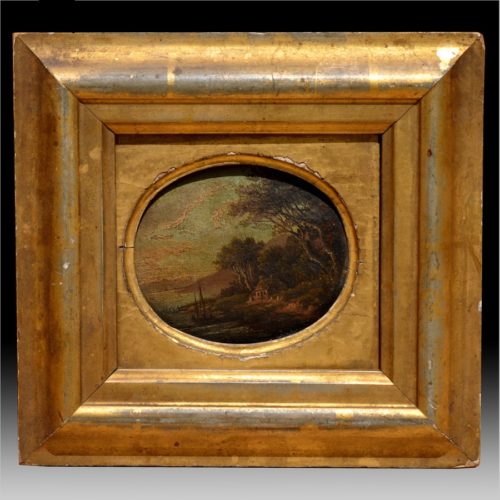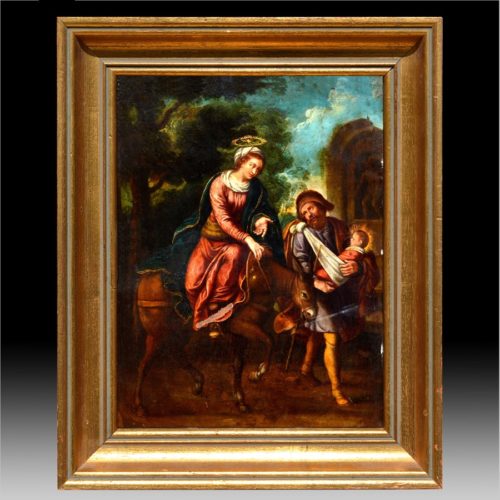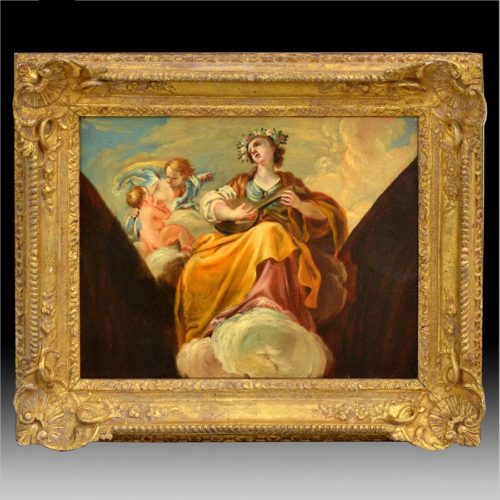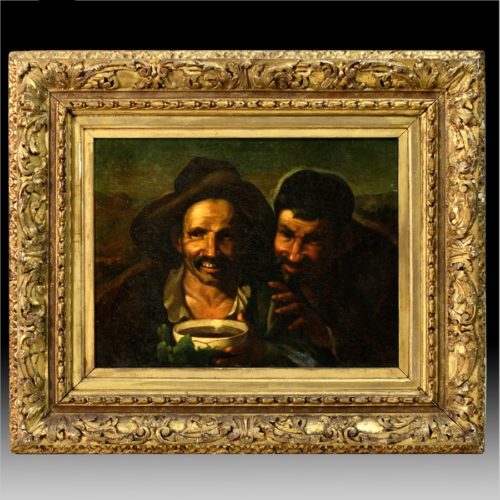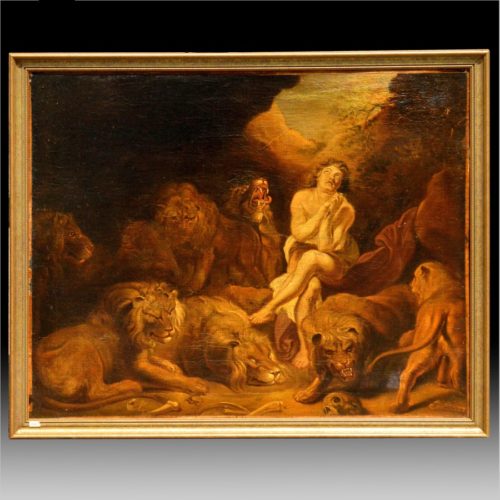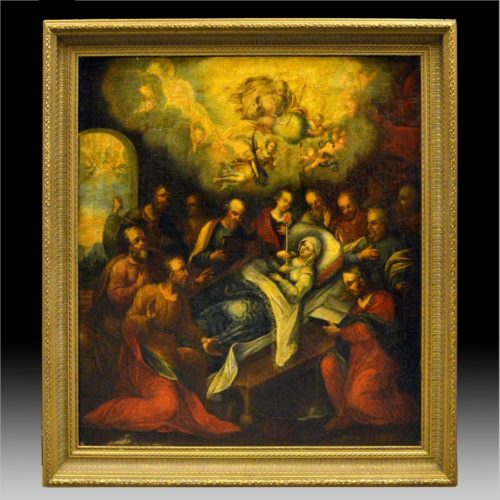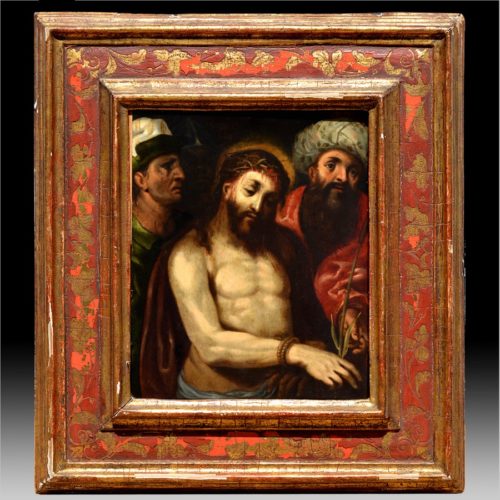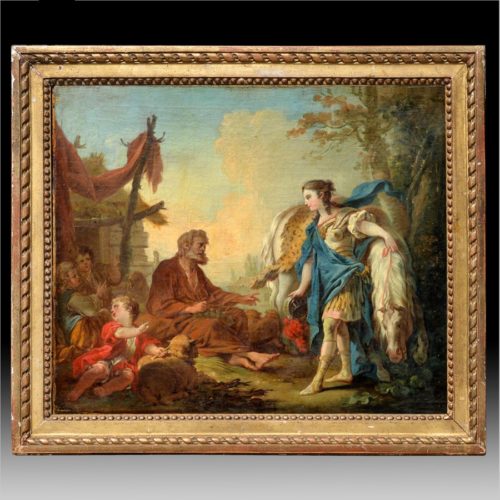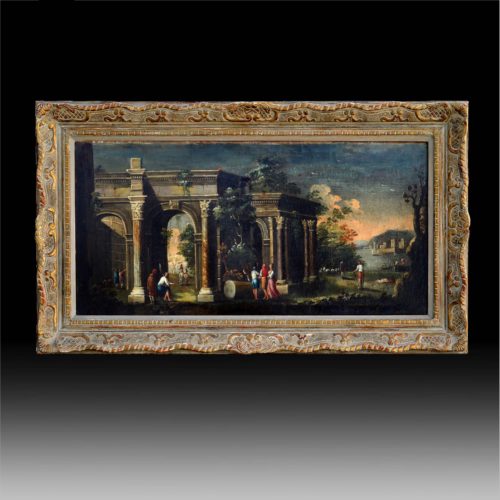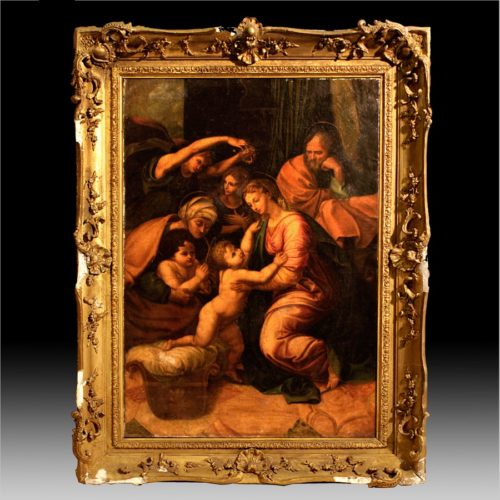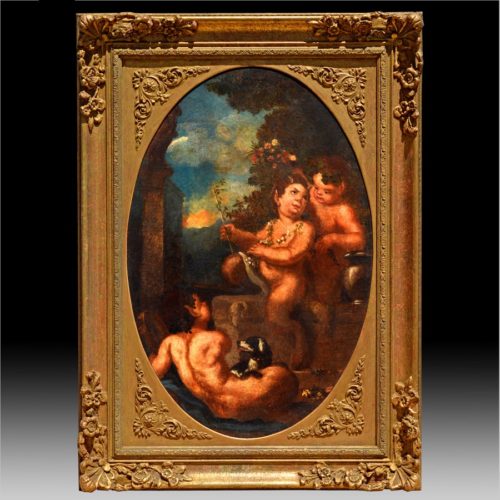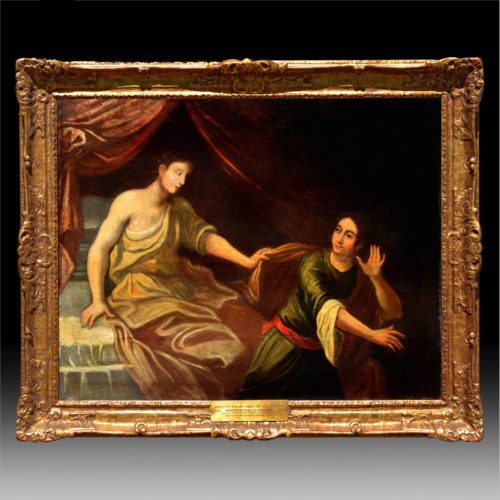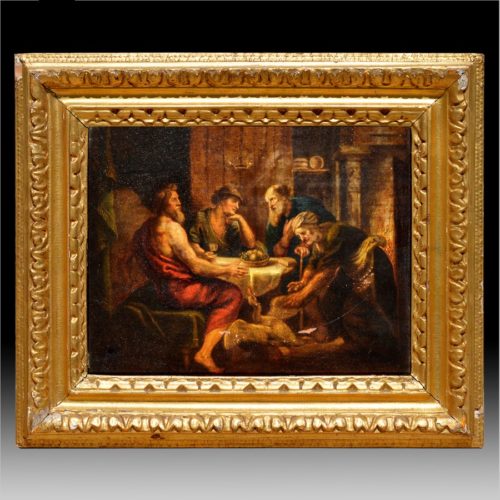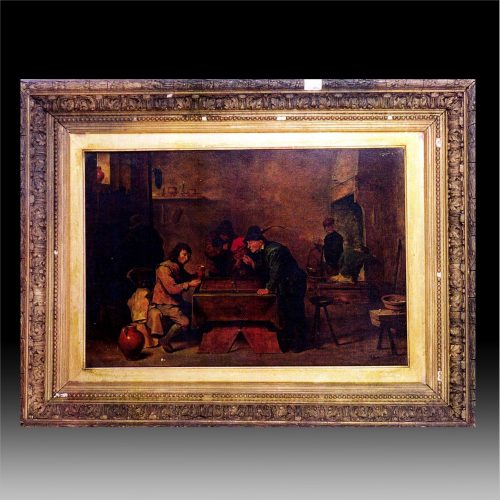-
Henri Gascars ‘Portrait of a Lady, half length in a blue Dress with a white Chemise and a brown Wrap, holding a Spaniel' Bears inscription on a label on the reverse ‘Mrs. Cunliffe' oil on canvas, in a painted oval 27 x 19 ½ in. 68.6 x 49.5 cm. Henri Gascar (1635 – 1 Jan 1701) (also Gascard, Gascars) was a French-born portrait painter who achieved artistic success in England during the reign of Charles II. He painted many leading ladies at court, including several of the King's mistresses, before returning to Paris. He subsequently relocated to Rome, where he died in 1701. Gascar came to England about 1674, probably at the behest of Louise de Keroualle, Duchess of Portsmouth, Charles II's favourite mistress. Gascar (or Gascard, as he seems to have spelt his name at first) was already known as a skillful portrait-painter; among the portraits already painted by him was that of Nicolas de Lafond, author of the "Gazette of Holland", painted in 1667, and engraved by Peter Lombart. The patronage of the Duchess of Portsmouth ensured Gascar a rapid success in England. His flamboyant style, contrasting with the stolid English approach, seemed to suit the frivolity of the time and he painted many of the ladies of Charles II's court. His lack of attention to detail in the likeness he made up for by the sumptuous draperies and tawdry adornments around the subject. For a short time he became fashionable, and is said to have amassed a fortune of over £10,000.
-
George Romney 1734-1802, British “Portrait of Emma Hart, Lady Hamilton, As Mirth” Oil in canvas 56 ½” x 45 ½” 143 X 115 cm Provenance: J.C. Curwen, M.P., Workington Hall, Cumberland, by whom acquired from the artist 1st Earl of Lichfield, Orgreave hall, Lichfield Thomas Challoner, Chester, (Sale: Christie’s, London, July 10, 1897) there purchased by Thos. Agnew and Sons, Ltd., London Duven Bros, New York, by 1929 until at least 1933 C.J. Wertheimer E.G. Raphael S101091-131 1667501-3 @AC-NB 1040 2/14
-
François Boucher 1703-1770, French “The Triumph of Neptune” François Boucher (French; 29 September 1703 – 30 May 1770) was a French painter, draughtsman and etcher, who worked in the Rococo style. Boucher is known for his idyllic and voluptuous paintings on classical themes, decorative allegories, and pastoral scenes. He was perhaps the most celebrated painter and decorative artist of the 18th century. He also painted several portraits of his patroness, Madame de Pompadour. A native of Paris, Boucher was the son of a lesser known painter Nicolas Boucher, who gave him his first artistic training. At the age of seventeen, a painting by Boucher was admired by the painter François Lemoyne. Lemoyne later appointed Boucher as his apprentice, but after only three months, he went to work for the engraver Jean-François Cars. Boucher died on 30 May 1770 in his native Paris. His name, along with that of his patron Madame de Pompadour, had become synonymous with the French Rococo style, leading the Goncourt brothers to write: "Boucher is one of those men who represent the taste of a century, who express, personify and embody it." OM-300 CL102794-139640801-2
-
David Teniers ‘Topers in a Tavern Interior’ oil on white metal 10 3/8 x 12 ½ in. CL102794-244 318702-2 Price:4,500 @AC-NB
-
F. Hohle (early 20th Century) after Frans Hals. ‘Two singing Boys’ signed lower right F. Hohle cop and with the monogram lower left FG, oil on canvas 66.5 x 53 cm The original, on canvas, 66x52 cm, is in the Staatliche Kunstammlung Kassel. It was acquired by Landgraf Wilhelm VIII of Hessen in 1749 (see S.Slive, Frans Hals, 1974, II.fig. 44 and III.pp.15/16, no.23) CA102894-46 734506-3 @Albertson
-
War Scene Oil on canvas 22 ½” x 27” Year of work: 1880
-
Charles François Jalabert Women in the Forest Oil on canvas Within a painted arch 39.4 x 31.8 cm S71791-209 899001-3
-
Jan Josef Horemans ‘A Family singing in an Interior’ bears indistinct signature; oil on canvas 12 ½ x 9 ¼ in. 31.7 x 23.5 cm CL102794-225 327203-2 @AC-NB
-
Christian Georg Schütz (German, 1718-1791) “A River Landscape with a Boat Moored by a Cottage” Oil on board, oval 3 1/3 x 3 ¾ inches (8.6 x 9.5 cm) CL 201794-171 18841-2 @NB-1040 #92
-
Francisco Bayeu Y Subias (1734-1795) “An Allegorical Figure of Music, a Study for a Pedentive” Oil on paper laid down on canvas 13 ¼ x 16 ½ inches Francisco Bayeu y Subias (9 March 1734 – 4 August 1795) was a Spanish painter, active in a Neoclassic style, whose main subjects were religious and historical themes. Born in Zaragoza, Aragon, he received a broad childhood education. He then moved to Madrid, winning a scholarship with the painting of the ‘’Tyranny of Gerion’’ to study in the Academia Real de Bellas Artes de San Fernando. The death of his parents and the care of his brothers forced him to return to Zaragoza, until he was recalled by Anton Raphael Mengs to help decorate the Royal Palace of Madrid. He served as court painter to King Charles III of Spain. He was named a professor of the Royal Academy of Fine Arts of San Fernando in 1765 and director in 1788. He painted in the Charterhouse of Aula Dei in Zaragoza. In 1767 he was named court painter for Charles III, king of Spain. He was involved in the decoration of various Royal palaces near Madrid. He helped provide designs for tapestries. He also painted for the College of San Ildefonso, the Royal Monastery of the Incarnation (Madrid), the Basilica of our Lady del Pilar in Zaragoza, and the cloister of the Cathedral of Toledo.
-
Diego Velaquez Bacchus – a detail Oil on canvas 16 x 20 ½ in. 40.7 x 52.1 cm CL102794-233 325501-2 @AC-GN
-
Sir Peter Paul Rubens ‘Daniel in the Lion’s Den’ oil on canvas, unframed 30 ¼ x 37 in. (76.8 x 94 cm) CL102794-119 328901-2 @Albertson
-
Agostino Carracci (Italian, 1557-1602) “Ecce Homo” Oil on copper 11 7/8 x 9 ½ inches (30 x 24.3 cm) CL102794-66 325502-2 @NB-1040 #20
-
Louis-Jean-François Lagrenée (French, 1724-1805) “Ermina and the Shepherds” Oil on canvas 18 x 21 ½ inches @NB-1040 #45
-
Antonio Joli (Italian, 1700-1777) “Figures Amongst Classical Ruins” Oil on canvas 15 ¼ x 30 ½ inches (38.7 x 77.5 cm) Antonio Joli or Ioli (1700 – 29 April 1777) was an Italian painter of vedute and capricci. Born in Modena, he first was apprenticed to Rafaello Rinaldi. He then studied in Rome under Giovanni Paolo Panini, and in the studios of the Galli da Bibbiena family of scene-painters. He became a painter of stage sets in Modena and Perugia. In 1732 he moved to Venice, where he worked as stage-painter for opera productions at the Teatro di San Giovanni Grisostomo and the Teatro San Samuele of the Grimani family. In 1742 he went to Dresden, and then to London (1744–48) and Madrid (1750–54).
-
Raphael (Raphael Sanzio da Urbino)(Italian, 1483-1520) “HeligaFamiljen” Oil on canvas 48.4 x 36.6 inches CL102794-32 351002-2 @AL 7/13
-
Pier Francesco Mola (Italian, 1612-1666) “Infant Satyrs Playing by a Plynth” Oil on canvas 24 x 16 inches (60.9 x 40.7 cm) CL102794-136 540802-2 @NB-1040 Tagged
-
Francesco Di Simone da Santa Croce (1480-1548) “Joseph’s Escape from Potiphar’s Wife” From the collection of Pinero Migliorati Lugano, Taken from Old Church in Northern Italy (one of five). @NB-1040 #88
-
Sir Peter Paul Rubens (Flemish, 1577-1640) “Mars and Venus and Philemon and Baucis” Oil on copper 9 x 11 ¾ inches (22.8 x 29.7 cm) CL102794-116 439101-2 @NB-1040 #22
-
David Teniers Peasants playing backgammon Oil on panel 14 ½ x 21 ½ in. (36.7 x 54cm) 328903-2

